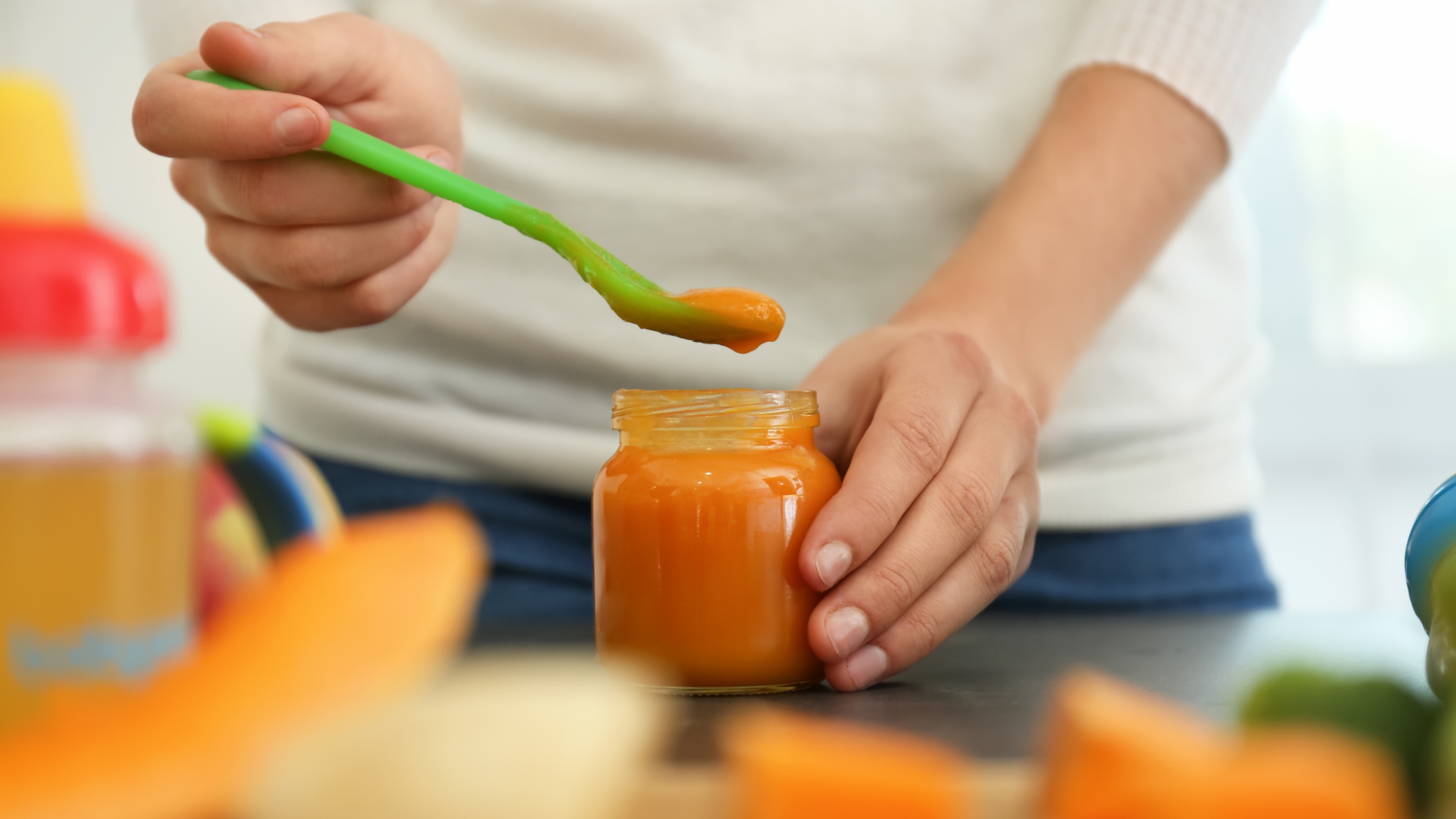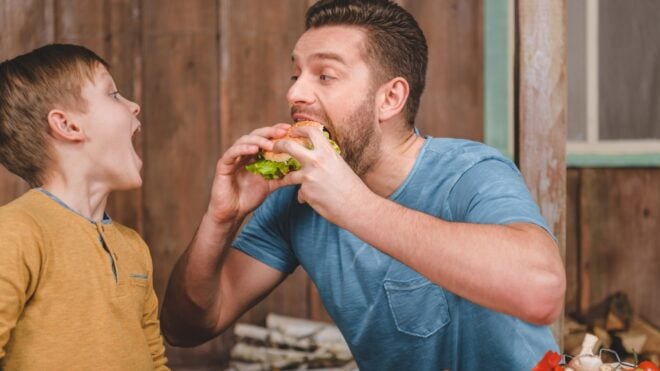
The FDA is sounding the alarm on an issue that's had U.S. consumers on edge for years: the presence of lead in certain store-bought baby and toddler foods. According to new guidance issued on Tuesday, the FDA is now recommending that the allowable levels of lead be lowered to 20 parts per billion or less to further reduce exposure rates for public health and safety.
As shocking as this is, it isn't a newly discovered problem
“For more than 30 years, the FDA has been working to reduce exposure to lead, and other environmental contaminants, from foods," said FDA Commissioner Dr. Robert Califf in Tuesday's statement. "This work has resulted in a dramatic decline in lead exposure from foods since the mid-1980s."
It's important to note that lead, arsenic, cadmium, and mercury are all naturally occurring elements commonly found in the soil where crops are grown. This is why they often find their way into store-bought foods and can be hard for most consumers to avoid. Some crops, however, contain higher levels than normal, due to the use of pesticides and other industrial pollutants.
That said, it's taken a long time for the public to see any real action on limiting them. And when it comes to the presence of toxic chemicals in baby and toddler foods in particular, that hasn't been widely known about — or discussed — until pretty recently.
The issue first gained national attention in 2017
That was when a study by the Clean Label Project tested a large batch of popular baby foods and formulas sold in the U.S. By the end of the study, researchers determined that 80% of them contained "alarming" amounts of arsenic, lead, and other dangerous chemicals.
Two years later, an extensive report by Healthy Babies Bright Futures dug into the presence of chemicals found in baby food in particular, and confirmed that a high number of popular baby food brands contained toxic chemicals that could be harmful to babies and children.
For that study, 168 different baby foods from major U.S. manufacturers were tested, leading researchers to find that 95% of them contained lead, 73% contained arsenic, 75% contained cadmium, and 32% contained mercury.
Researchers also learned that one-quarter of the foods tested contained all four heavy metals, and one in five baby foods had over 10 times the 1-ppb limit of lead endorsed by public health advocates.
The study ultimately sparked a congressional investigation in 2021
During the investigation, members of Congress confirmed that multiple baby food manufacturers were not only aware of the issue, but also knowingly sold items with high levels of toxic metals. Foods included rice puffs and infant cereals and purees, according to Politico.)
The subcommittee’s report heavily criticized two brands in particular: Beech-Nut, for only issuing a partial recall, and Gerber, for not issuing a recall at all, even after officials found that both companies had food products on the market which exceeded the FDA's standards for arsenic.
Plum Organics was also slammed for selling products "tainted with high levels of toxic metals," after the subcommittee reviewed testing data submitted by the company.
Now the FDA is finally pushing for action
"The proposed action levels announced today, along with our continued work with our state and federal partners, and with industry and growers to identify mitigation strategies, will result in long-term, meaningful. and sustainable reductions in the exposure to this contaminant from foods,” Califf continued in the agency's latest statement. "For babies and young children who eat the foods covered in today’s draft guidance, the FDA estimates that these action levels could result in as much as a 24-27% reduction in exposure to lead from these foods."
The foods referenced in the study include processed foods sold in boxes, jars, pouches, and tubs that are specifically marketed for consumption by babies and kids under 2, the FDA shared.
Today we announced draft guidance for industry on action levels for lead in processed foods that are intended for babies and children under 2 years of age, to help reduce potential health effects in this vulnerable population from dietary exposure to lead. https://t.co/XjDF76QW3S pic.twitter.com/51ufGLr4RO
— U.S. FDA (@US_FDA) January 24, 2023
“The action levels in today’s draft guidance are not intended to direct consumers in making food choices," said Susan Mayne, Ph.D., director of the FDA’s Center for Food Safety and Applied Nutrition. "To support child growth and development, we recommend parents and caregivers feed children a varied and nutrient-dense diet across and within the main food groups of vegetables, fruits, grains, dairy, and protein foods.
"This approach helps your children get important nutrients and may reduce potential harmful effects from exposure to contaminants from foods that take up contaminants from the environment," Mayne concluded.
But not everyone feels the new guidelines will actually solve anything
"While any action on the part of the FDA is welcome, the suggested levels of lead are not low enough to move the needle," said Jane Houlihan, the national director of science and health for Healthy Babies Bright Futures, which lead the ground-breaking 2019 study. "Nearly all baby foods on the market already comply with what they have proposed."
For these reasons and more, Houlihan is unwilling to applaud the agency's latest efforts.
"The FDA hasn’t done enough with these proposed lead limits to protect babies and young children from lead’s harmful effects," Houlihan stated.
She also noted that there isn't actually a known "safe" level of lead exposure in general, a fact reiterated by the American Academy of Pediatrics) (AAP), making children and babies "particularly vulnerable."
In fact, exposure to toxic heavy metals can be especially harmful to infants and children because of its negative impacts on brain development. According to the AAP, it's been linked with learning, cognition, and behavioral problems.
So where do parents go from here?
That's the main question on everyone's minds right now. And unfortunately, there's no easy answer.
According to experts, buying organic baby food or making it at home is a good start, but it won't eliminate the risk completely. Instead, experts say to vary the foods your little one eats and to try and choose foods that are less likely to be contaminated.
For more guidance on this, visit Healthy Babies, Bright Futures.




